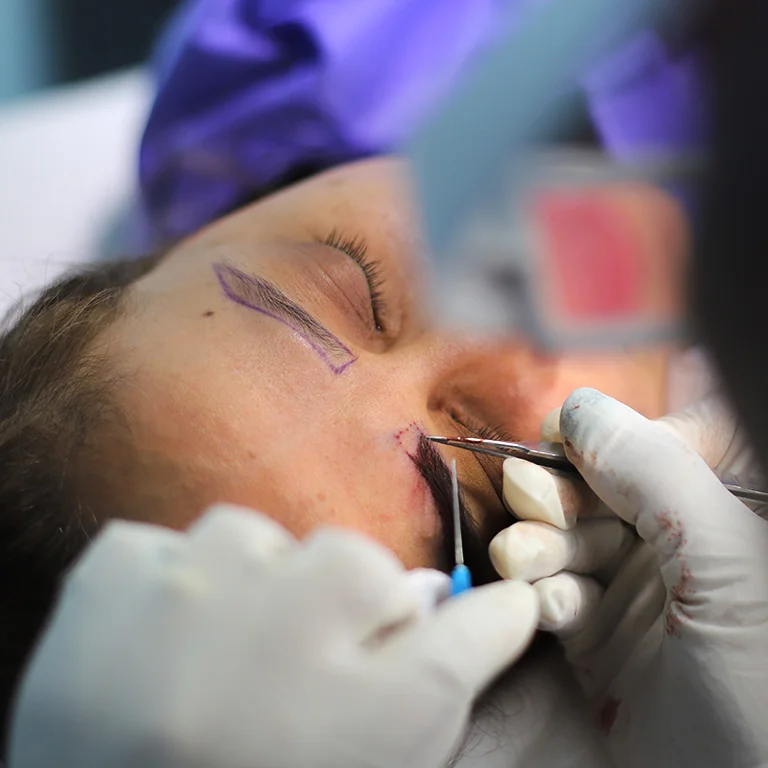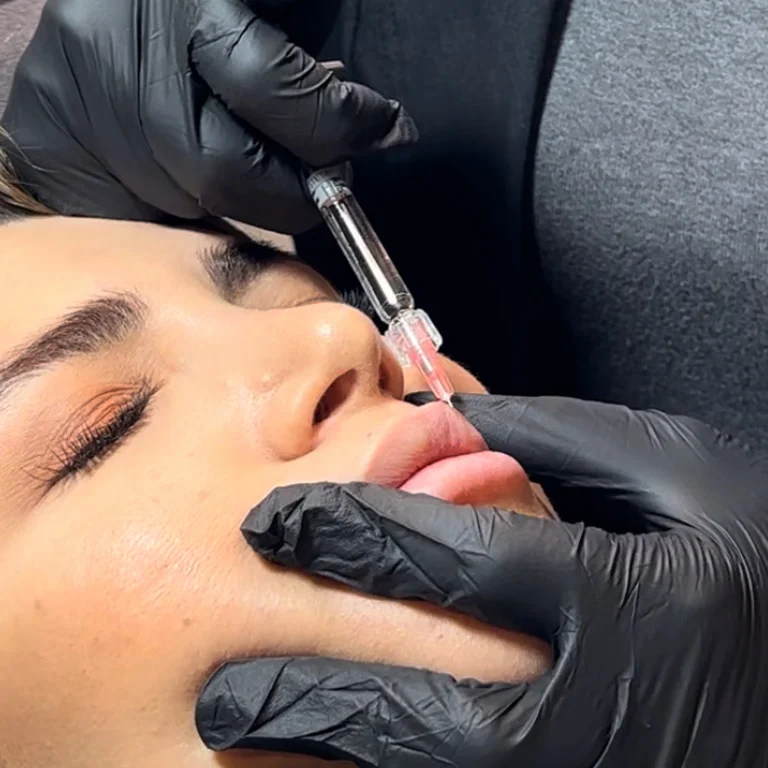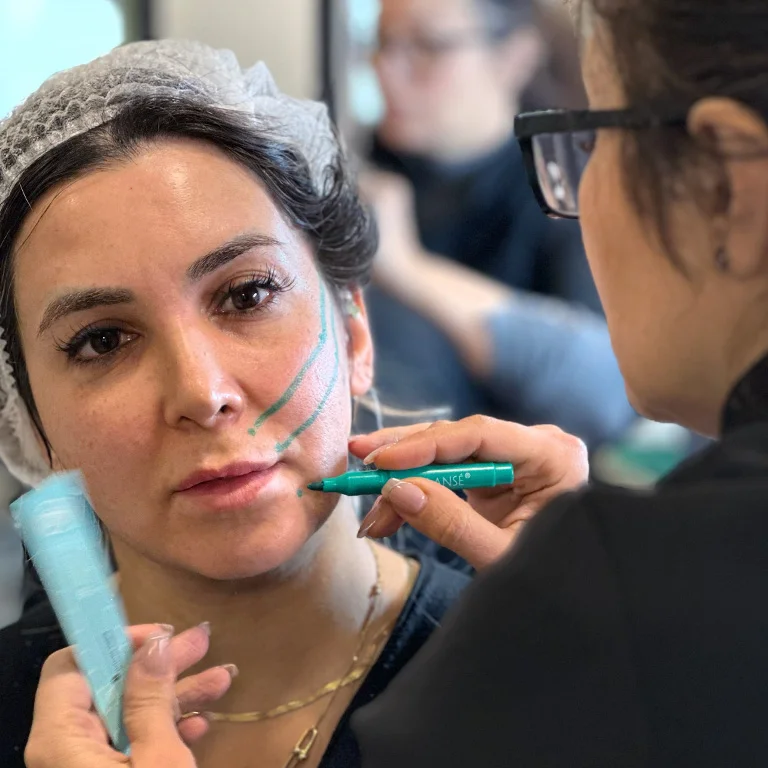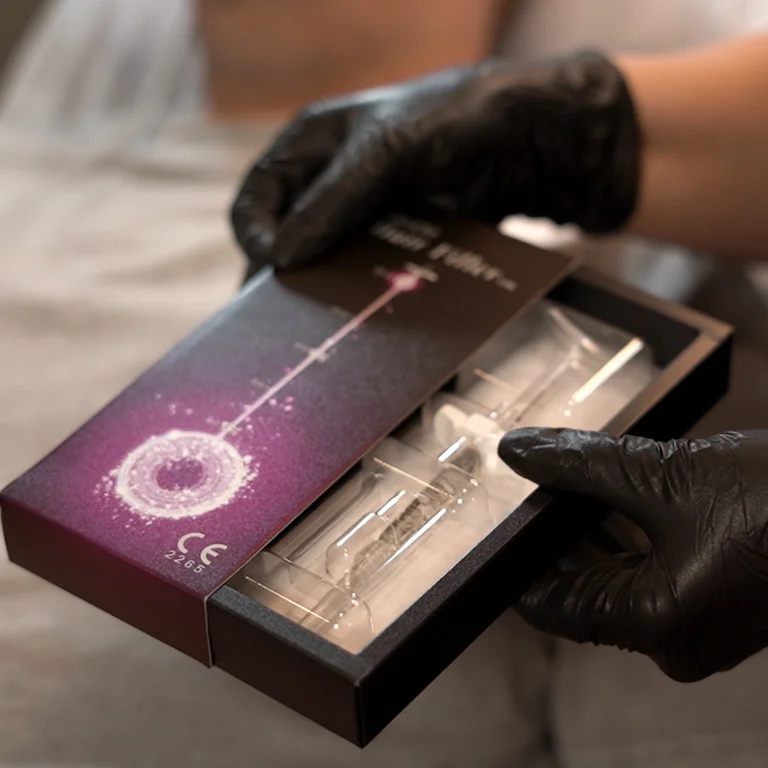What is Jaw Contouring?
Jaw contouring, or orthognathic surgery, derives its name from the Greek word “orthos,” meaning “straight,” and “gnathos,” meaning “jaw.” This concept not only addresses the correction of existing jaw irregularities but also aims at improving and beautifying this essential facial feature.
Jaw contouring is a cosmetic process dedicated to enhancing the shape and structure of the jaw. Recognized not only as a beauty technique but also as a solution for improving and adjusting facial skeletal structures, properly contoured jaws create positive visual effects, drawing attention to the beauty of facial details.

Exploring Different Methods of Jaw Contouring
- Thread Jaw Contouring: Using special threads, this method adjusts the jaw to the desired angles, refining facial contours.
- Filler Jaw Contouring: By injecting viscous fillers into various jaw areas, this method alters facial volume and improves angles.
- Fat Injection Jaw Contouring: Fat injection from other body areas to the jaw achieves balance and alterations in angles.
- Botox Jaw Contouring: Utilizing Botox to relax jaw muscles positively influences facial shape and angles.
- Kybella Jaw Contouring: Injecting Kybella into different jaw areas aims to change facial dimensions.
- HIFU Jaw Contouring: High-intensity focused ultrasound waves non-surgically adjust jaw angles, positively affecting facial structures.
- RF Jaw Contouring: Using radiofrequency waves achieves desired adjustments in jaw angles.
- Surgical Jaw Contouring (Orthognathic Surgery): This method, involving orthognathic surgeries, brings significant changes to jaw angles and shape.
These methods serve as diverse solutions for jaw and facial contouring, adapted to individual needs and preferences.
Candidates for Jaw Contouring Services
Jaw contouring, as a cosmetic surgical process, can be beneficial and effective for individuals with specific characteristics. These include:
- Individuals with broad or wide jaws who desire a change in angle.
- Those with square-shaped jaws can improve facial angles through this surgery.
- Individuals with circular chin shapes can utilize this opportunity to alter chin shape and improve facial angles.
- Those with non-angled jawlines can enhance facial appearance by creating angles.
- Individuals with prominent cheekbones can improve facial angles through this surgery.
- Women with a more masculine jaw appearance can achieve a more feminine look through jaw contouring.
- Individuals with slender cheeks can create desirable changes in facial angles.
If you possess any of these characteristics and seek a change in your facial angles, consulting with a professional plastic surgeon can provide further insights into the process and its execution.
Advantages of Jaw Contouring
Jaw contouring, as an aesthetic approach, imparts beauty and balance to facial features. This method can have various positive effects on facial appearance, including:
- Symmetry and Harmony in Facial Features: Jaw contouring can make facial features more symmetrical and balanced through proportional changes in jaw form.
- Attractiveness and Emphasis on Facial Elements: Particularly highlighting elements like the chin and lips, this method enhances facial attractiveness.
- Contouring and Concealing Flaws such as Jaw Shortage: Jaw contouring conceals flaws like jaw shortness by creating contours where needed.
- Elimination of Facial Roundness: Altering jaw angles can reduce unwanted roundness and indentations on the face.
- Correction of Excessive Facial Slimness: Jaw contouring can visually increase facial volume, correcting excessive facial slimness.
- Improvement of Side-Face Appearance: This method addresses the display of facial features from a side-view, introducing necessary improvements.
- Non-Invasive and Low-Discomfort Method: Compared to surgical methods, jaw contouring is recognized as a non-invasive approach, reducing postoperative pain and complications.
- No Recovery Period and Low Risk: This method requires no recovery period and carries lower risks compared to surgical alternatives.
- Proportional Jaw with Other Facial Features: Tailored to individual needs, jaw contouring achieves desirable balance between the jaw and other facial features.
Most Important Disadvantages of Jaw Contouring
Jaw contouring, being a surgical method, may entail various drawbacks. One of the most significant disadvantages is swelling, which may occur in the surgical area. While this swelling typically diminishes over time, it can cause discomfort and irregularities during the recovery period.
Bleeding is also a potential problem in jaw contouring. Bleeding may occur during surgery or recovery, requiring additional interventions and medical care.
Infection is another major drawback of jaw contouring. Any infection in the surgical area can create discomforting symptoms and necessitate antibiotic usage.
Wounds may appear as another issue in jaw contouring. These wounds, in addition to causing discomfort, may delay recovery.
Nerve damage is one of the diverse possibilities in jaw contouring. This damage may alter the sensation and movement of certain facial areas.
Ultimately, pain is a common issue after jaw contouring. This pain may manifest in the surgical site or other areas of the mouth and face and may engage some patients for an extended period. To prevent or minimize these issues, it is crucial for patients to carefully follow their physician’s guidance during the recovery period.
jaw contouring is a transformative process with both advantages and disadvantages. Individuals considering this procedure should weigh the potential benefits against the risks and consult with a qualified professional to make informed decisions about enhancing their facial aesthetics and achieving their desired outcomes.
In general, jaw contouring is an art of beauty and health that contributes to enhancing the appearance and self-confidence of individuals. Through physical exercises, surgical methods, and non-surgical techniques, this art has the potential for improvement. By relying on credible sources, you can make the best decisions to enhance the beauty and health of your face.













